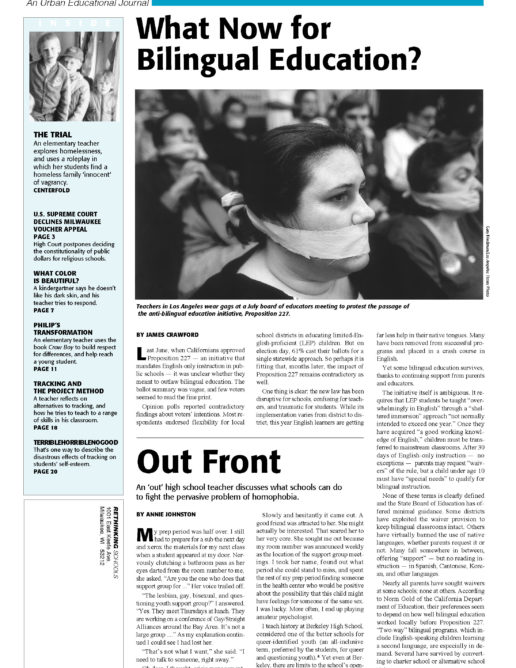Preview of Article:
Tracking and the Project Method
A fifth grade teacher reflects on alternatives to tracking, and how he deals with teaching to a range of skills so that all the children learn.
Illustrator: Susan Lina Ruggles
I grew up in Madison and I recall how some of my teachers dealt with the varied skill levels in their classrooms. In elementary school, we were placed by “ability” in reading and math groups named after birds and animals, a thinly veiled attempt to mask who the teacher thought was smart and who was not. There was virtually no chance of moving from one group to another, a rigidity I remember well because my best friend and I were always in different groups.
As we moved into junior high, this tracking became more pronounced. Every kid in the school knew where they fit in the intellectual pecking order, and teachers held different expectations for different groups.
There were five gradations for the seventh grade student body – 7-1 being “the best and the brightest,” with the “losers” grouped in 7-5. Each gradation started the day together in homeroom and traveled as a group to all classes, except gym and industrial arts. Interestingly, during this time my family moved overseas for 18 months, and upon my return I was placed into the lowest track. School officials quickly changed my academic classes, but left me in the lower-track homeroom. It was there that I made my first African-American friends – not surprisingly, since then as now, racist assumptions about intelligence led to a tracking system in which African-Americans were often segregated and grouped into the lower tracks.
By high school, the tracks were even more rigid: vocational, general education, and college bound. It’s not hard to guess which kids were in the top track at my school, Madison West High School – the middle-class and upper-middle-class whites.
In my sophomore year, in a fit of progressivism, Madison West detracked the social studies courses. I have no clue whether school officials deemed the effort “successful,” but one incident in particular made me realize the negative impact of tracking on some of my friends. While I was leaving my tenth grade U.S. history class one day, a “lower-track” student – a cheerleader – approached me and apologized for being in the class. She told me she was sorry for “slowing down the class with her questions” and wondered why they put all the “smart and dumb” kids together in the same history class. I was taken aback by her comments, but recovered enough to tell her the problem wasn’t her lack of smarts, but the less-than-capable teacher that bored all the students to tears every day.

